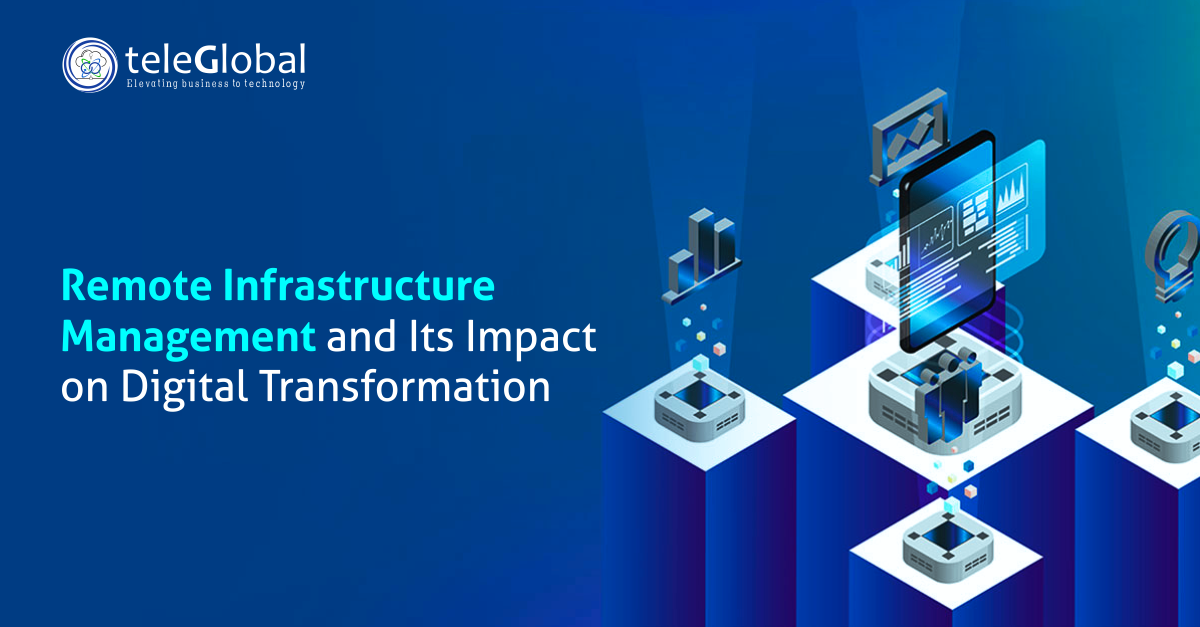
| Author: Abhinita Singh | Published: 05-Jan-2024 |
Nowadays, businesses face mounting pressure to become more agile, secure and efficient. Many leaders are looking for ways to streamline operations, reduce downtime and scale effortlessly. This is where Remote Infrastructure Management becomes a game changer. By enabling centralized oversight of server’s networks applications and endpoints from anywhere it directly supports digital transformation goals.
In this blog, we will walk you through what Remote Infrastructure Management means, why it matters how it empowers companies and what tools and systems to watch out for.
At its core, Remote Infrastructure Management allows IT teams or managed service providers to monitor and manage all components of a technology stack without being physically on site. This comes into play with a remote infrastructure management system that connects to hardware and software to deliver visibility alerts configuration and maintenance. Whether you call it remote it infrastructure or it infrastructure management the principle remains the same centralized control that saves time and reduces errors.
Organizations embarking on digital transformation want more than shiny tools. They want speed, reliability, security and foresight. Let us explore how Remote Infrastructure Management delivers:
Key to Remote Infrastructure Management are reliable tools. The best remote desktop software stands out here by offering secure connections direct control and seamless user experience. Examples include solutions that allow you to take over workstations troubleshoot issues and transfer files easily. These tools complement broader infrastructure management systems.
Together these tools form a cohesive remote it infrastructure ecosystem that supports proactive management and transformation. Many organizations invest in a combination of custom-built dashboards and commercial remote infrastructure management platforms to meet their unique requirements.
Consider a mid-sized financial services firm that relies on manual site visits for system maintenance. Downtime was frequent and costly. After implementing a remote infrastructure management system along with remote desktop software, they achieved 50 percent faster incident resolution, cut onsite visits by more than 70 percent, and boosted customer satisfaction scores measurably.
Another example: a healthcare provider needed strong security compliance across multiple clinics. Centralizing it infrastructure management reduced regulatory audit findings by two thirds and eliminated many manual checklists.
These stories highlight that Remote Infrastructure Management is not just a tactic but a foundational strategy for transformation.
To get real value from remote infrastructure management follow these guidelines:
Driving digital transformation depends on your ability to manage infrastructure efficiently proactively and securely. Remote Infrastructure Management delivers all three. A properly implemented remote infrastructure management system helps leaders reduce downtime, lower costs improve security and scale with confidence. The synergy of remote it infrastructure and it infrastructure management tools such as remote desktop software gives you control without complexity.
For enterprises ready to elevate their operations. We at Teleglobal, empower you with the right expertise cloud strategies security and AI enabled management to make remote infrastructure an asset not a burden.
It is the method of overseeing servers’ networks endpoints and applications from any location using centralized tools that enable monitoring configuration and maintenance without physical presence.
By providing continuous monitoring real time alerts and automated tools to resolve issues swiftly it cuts mean time to repair and prevents small issues from becoming major outages.
Remote infrastructure eliminates the need for physical presence allowing teams to support geographically dispersed environments more efficiently and securely.
The best solution depends on your team’s needs but look for software that offers secure direct access screen sharing file transfer strong authentication and ease of use.
Yes. By reducing travel costs onsite visits and reaction time it can slash operational expenses by up to a third depending on scale and deployment scope.
According to recent industry reports, the global remote infrastructure management market is expected to reach close to twenty-five billion US dollars by twenty eight demonstrating strong demand for these solutions.
 close
close

Hi there! At TeleGlobal, we turn your cloud vision into AI-accelerated reality. What challenge can we help you solve?
Powered by ![]() teleBot
teleBot